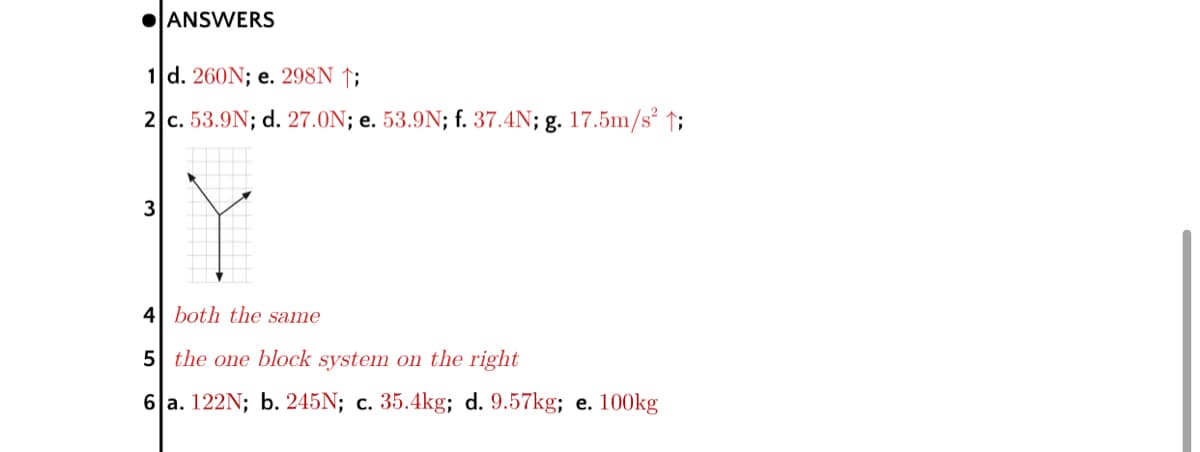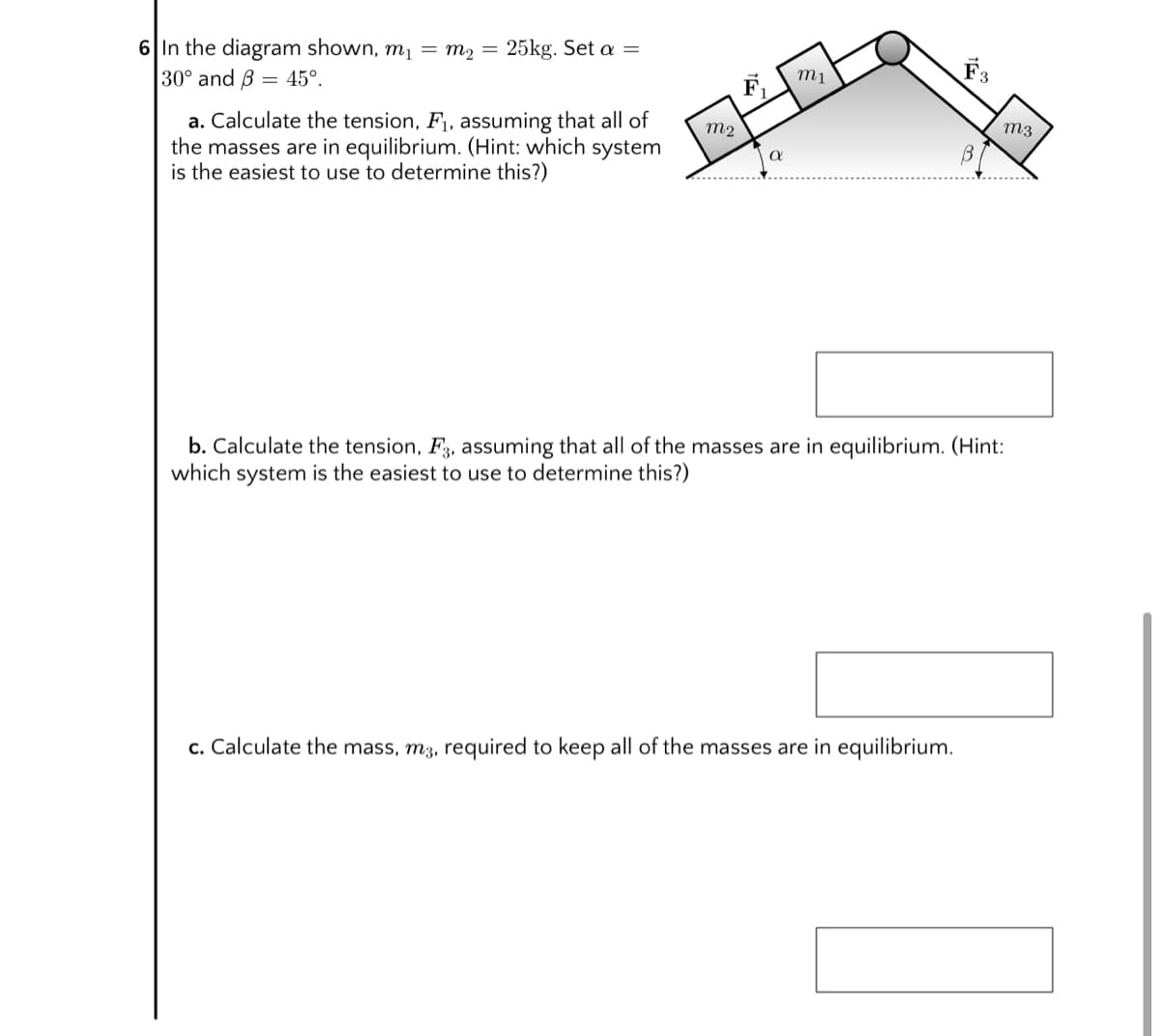6 In the diagram shown, m1 = m2 = 25kg. Set a = 30° and B = 45°. F3 m1 a. Calculate the tension, F1, assuming that all of the masses are in equilibrium. (Hint: which system is the easiest to use to determine this?) m2 m3 b. Calculate the tension, F3, assuming that all of the masses are in equilibrium. (Hint: which system is the easiest to use to determine this?) c. Calculate the mass, m3, required to keep all of the masses are in equilibrium.
6 In the diagram shown, m1 = m2 = 25kg. Set a = 30° and B = 45°. F3 m1 a. Calculate the tension, F1, assuming that all of the masses are in equilibrium. (Hint: which system is the easiest to use to determine this?) m2 m3 b. Calculate the tension, F3, assuming that all of the masses are in equilibrium. (Hint: which system is the easiest to use to determine this?) c. Calculate the mass, m3, required to keep all of the masses are in equilibrium.
College Physics
1st Edition
ISBN:9781938168000
Author:Paul Peter Urone, Roger Hinrichs
Publisher:Paul Peter Urone, Roger Hinrichs
Chapter4: Dynamics: Force And Newton's Laws Of Motion
Section: Chapter Questions
Problem 14PE: Suppose the mass of a fully loaded module in which astronauts take off from the Moon is 10,000 kg....
Related questions
Question
A-C. Thank you in advance

Transcribed Image Text:OANSWERS
1 d. 260N; e. 298N ↑;
2 c. 53.9N; d. 27.0N; e. 53.9N; f. 37.4N; g. 17.5m/s² ↑;
3
4| both the same
5 the one block system on the right
6 a. 122N; b. 245N; c. 35.4kg; d. 9.57kg; e. 100kg

Transcribed Image Text:6 In the diagram shown, m1 = m2 = 25kg. Set a =
30° and B = 45°.
m1
F.
a. Calculate the tension, F1, assuming that all of
the masses are in equilibrium. (Hint: which system
is the easiest to use to determine this?)
m2
m3
b. Calculate the tension, F3, assuming that all of the masses are in equilibrium. (Hint:
which system is the easiest to use to determine this?)
c. Calculate the mass, m3, required to keep all of the masses are in equilibrium.
Expert Solution
This question has been solved!
Explore an expertly crafted, step-by-step solution for a thorough understanding of key concepts.
Step by step
Solved in 3 steps with 3 images

Knowledge Booster
Learn more about
Need a deep-dive on the concept behind this application? Look no further. Learn more about this topic, physics and related others by exploring similar questions and additional content below.Recommended textbooks for you

College Physics
Physics
ISBN:
9781938168000
Author:
Paul Peter Urone, Roger Hinrichs
Publisher:
OpenStax College

Physics for Scientists and Engineers with Modern …
Physics
ISBN:
9781337553292
Author:
Raymond A. Serway, John W. Jewett
Publisher:
Cengage Learning

Physics for Scientists and Engineers
Physics
ISBN:
9781337553278
Author:
Raymond A. Serway, John W. Jewett
Publisher:
Cengage Learning

College Physics
Physics
ISBN:
9781938168000
Author:
Paul Peter Urone, Roger Hinrichs
Publisher:
OpenStax College

Physics for Scientists and Engineers with Modern …
Physics
ISBN:
9781337553292
Author:
Raymond A. Serway, John W. Jewett
Publisher:
Cengage Learning

Physics for Scientists and Engineers
Physics
ISBN:
9781337553278
Author:
Raymond A. Serway, John W. Jewett
Publisher:
Cengage Learning

College Physics
Physics
ISBN:
9781285737027
Author:
Raymond A. Serway, Chris Vuille
Publisher:
Cengage Learning

Physics for Scientists and Engineers: Foundations…
Physics
ISBN:
9781133939146
Author:
Katz, Debora M.
Publisher:
Cengage Learning

An Introduction to Physical Science
Physics
ISBN:
9781305079137
Author:
James Shipman, Jerry D. Wilson, Charles A. Higgins, Omar Torres
Publisher:
Cengage Learning